News

|
Klara Hlouchova´s team gets HFSP Young Investigator grantThe team of Klara Hlouchova together with two other teams, Kosuke Fujishima (Earth-Life Science Institute, Tokyo) and Stephen Fried (John Hopkins University, Baltimore) were awarded the prestigious Human Frontier Science Program Young Investigators grant for their interdisciplinary project investigating the structure/function space of prebiotic to biological proteins. The project is supported by an overall amount of around 1 Million USD, distributed among the three project members. Published Apr 02, 2019 |
|
|
Behind the fog as thick as pea soup and even further…...we often find our country. This is because in the “Czech basin surrounded by mountains”, fog is a relatively frequent phenomenon, in part because of the geomorphology. We talk about fog when a cloud of suspension of water droplets reduces the visibility to less than one kilometer in at least one direction. If the visibility is from 1 to 2 km, it is called mist and from 2 to 5 kilometers, haze. The most intense fog in terms of visibility and density is found in the mountains, where they also have a significant impact on the water balance, so we can talk about a major influence on the mountain ecosystem. In the lowlands, fog does not occur as often. In urban agglomerations, however, the occurrence of condensation nuclei formed by aerosol particles with radii from 10-8 to 10-5 support its occurrence. At the same time, the high levels of pollutants present a great danger. Individual places in Czechia differ not only in intensity, range and type, but also in the fog frequency, from only tens of days to almost 300 days a year. Several studies from different parts of Europe show a decrease in fog frequency due to either climate change or an improvement of the ambient air quality. And how does the long-term trend look in our territory? A group of scientists under the leadership of Iva Hůnová from the Institute for Environmental Studies is dealing with the question. Published Mar 25, 2019 |

|
BAE-GYOON PARK: EAST ASIAN URBAN AND REGIONAL DEVELOPMENTLecture: Special zones and territorialities of East Asian developmental states, 25.3. 2019, Monday, 15.00 - 17.00 Pravá rýsovna, Lecture: Urban ideology, Gangnam-ization of Korean urban development and the hegemony of Korean capitalism, 26.3. 2019, Tuesday, 13.00 - 14.30 Levá rýsovna. Published Mar 21, 2019 |

|
Artificial chemical DNA switch helps understand epigenetic mechanismsResearchers from the Czech Academy of Sciences and Charles University constructed an artificial chemical DNA switch and made the first step towards artificial epigenetics – targeted switching on and off of genes. Their paper was recently published in the journal Chemical Science. Published Mar 21, 2019 |
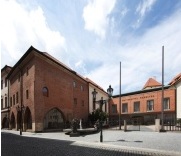
|
Carolinum - guided tour (for international students)Are you studying at one of the faculties at Charles University? And do you want to see where it all started? You are welcome to join us for a sightseeing guided tour through Carolinum - the historical building of Charles University on March 19th or April 9th at 4:30 p.m. Do not miss this unique opportunity to learn more about the university’s history. Published Mar 15, 2019 |
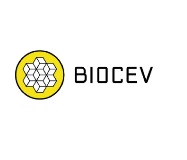
|
Open Day of Research Infrastructures and Core FacilitiesWe would like to cordially invite you to the Open Day of Research Infrastructures and Core Facilities which will take place on the April 3rd 2019 at the BIOCEV centre.Deadline for registration is on the March 25th, 2019. Published Mar 07, 2019 |

|
“The Parc” provides the bridge between academia and private sectorThe Parc (Pharmaceutical Applied Research Center) is marking its five-year anniversary by launching The Parc Awards at a ceremony held at Zentiva Headquarters in Prague on March 5th. The Parc is a unique research platform designed to benefit future generations of scientists. Our faculty is proud to take a part in the project. Published Mar 06, 2019 |
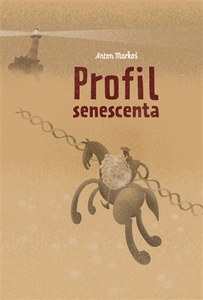
|
Popular Science: Anton Markoš: Profil senescentaAt the occasion of his jubilee, scientist, university lecturer and writer Anton Markoš published a collection of essays, studies and short texts he had written over the past 10 years. It is a diverse collection, and in his lively language, the author invites readers to follow him on his journey through various topics. On this path, he attempts to understand the very essence of life. Published Feb 25, 2019 |
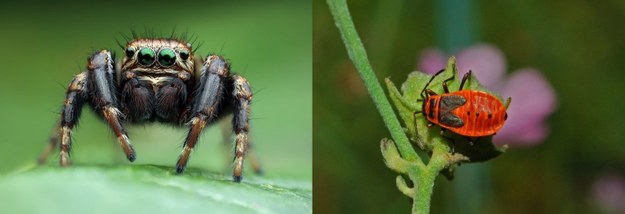
|
Popular Science: I SENSE A FIREBUG NEARBY…Animals are naturally trying to avoid becoming prey. Some depend on perfect camouflage, some prefer a hidden lifestyle, and some are equipped to defend themselves actively. However, even a wasp with a pointed stinger would rather fly away instead of fighting for its life. Could it somehow warn a potential predator ahead then? Aposematic signals have evolved for this exact reason. Aposematism is a easily-noticeable warning signal informing the recipient that the signaling animal is distasteful, venomous or otherwise dangerous. The striking yellow and black colors of wasps, newts or yellow-bellied toads are just that. Nevertheless, aposematic signals don’t end with coloration. Sometimes a smell is the best way to demonstrate how dangerous or distasteful one is. Whether a smell is truly a strong enough sign was investigated by a team of zoologists of the Faculty of Science, Charles University, led by Jan Raška. Published Feb 18, 2019 |

|
Popular Science: Is there a danger from arctic mosquitoes?Mosquitoes are known to be carriers of a wide spectrum of dangerous diseases. In this regard, tropical diseases, e.g. malaria, are the most well-known ones. However, we can also find some of them in the polar regions. A research team led by the Institute of Parasitology of Biology Centre CAS in České Budějovice focused on a survey of dangerous viruses in mosquitoes in the Arctic. Published Feb 11, 2019 |

|
Popular Science: Support for innovative companies in Czechia – where and whoEU funds are a frequently mentioned topic even in mainstream media. They support regional development, but also represent clientele networks and corruption or they are considered with other EU policies, for example migration policy. David Hana and Lenka Hellebrandová from the Department of Social Geography and Regional Development focused on spatial and sectoral differences in support of innovative companies in Czechia from the EU funds. Published Feb 04, 2019 |

|
Popular Science: Land cover changes in Central European Mountains: Case study of ŠumavaCentral European mountains are predominantly covered by forest. Norway spruce is the most prevalent species and the most affected one. Windstorms and subsequent insect outbreaks are two main disturbances that influence the structure, composition, species richness and land cover changes in general. Therefore, Tomáš Janík and Dušan Romportl from the Department of Physical Geography and Geocology investigated changes in the forest after the Kyrill windstorm in the Šumava National Park. Published Jan 28, 2019 |
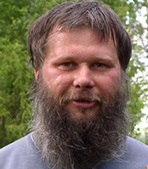
|
Soil Fauna Can Support Both Litter Decomposition And Soil Organic Matter AccumulationThese findings are described in the article entitled Effects of soil macro- and mesofauna on litter decomposition and soil organic matter stabilization, recently published in the journal Geoderma (Geoderma 332 (2018) 161-172). This work was conducted by Jan Frouz from the Czech Academy of Sciences and the Charles University in Prague. Published Jan 23, 2019 |

|
Popular Science: Carnivores in the shadow of bigger and more famous colleagues. How do foxes, badgers and martens live?In recent years we can see the return of big carnivores into Central Europe. Wolves, lynxes and bears are resettling the landscape and smaller carnivores are on the edge of interest. Therefore, a team of scientists led by Klára Pyšková from the Department of Ecology of our faculty focused on them. Published Jan 21, 2019 |
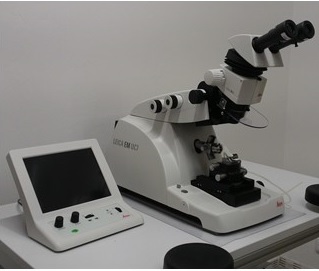
|
Opening of electron microscopy laboratory as a part of Charles University Centre of Advanced MaterialsNewly established Electron Microscopy Laboratory is now part of our Faculty. Laboratory is equipped with new JEOL JEM-NEOARM 200Ftransmission electron microscope. Published Jan 16, 2019 |

|
PhD STARS program is open for applicationsFaculty of Science of the Charles University in Prague has launched its program supporting talented PhD research students from all over the world. During the STARS 2019 call, prospective students can apply to PhD research topics announced on the web pages on January 14th, 2019. Deadline for application is March, 15, 2019. Published Jan 16, 2019 |

|
Popular Science: A trip in Baroque BohemiaBohuslav Balbín was a Baroque scholar, priest, writer and a very gifted natural historian. He concentrated his findings in a magnificent work entitled "Miscellanea of the Bohemian Kingdom". The first volume of the book has recently been published - for the first time in the Czech language (the original work was written in Latin). It is full of detailed and highly interesting information about many subjects. It opens a deep insight into the history of Czech science. Published Jan 13, 2019 |

|
POPULAR SCIENCE: How are holes in sandstone formed?Larger or smaller holes are often found on sandstone walls, sometimes separated by thin protrusions creating a structure resembling honeycombs. But how do these structures form? A team of scientists from the Institute of Hydrogeology asked this very question and experimentally verified the two most common theories. Published Jan 07, 2019 |

|
Popular Science: How to score an invasion?There are already several documents listing the one hundred worst alien species in Europe and aiming at raising awareness of the biological invasions and their possible impact. However, an international team, including Professor Petr Pyšek from the Department of Ecology of the Faculty of Science, decided to create a first list based on objective, precisely-defined criteria scoring the plant and animal species with respect to their real potential to cause ecological and socioeconomic damage in Europe. Published Jan 01, 2019 |
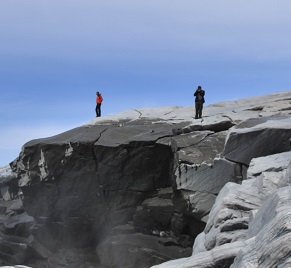
|
Melting ice sheets release tons of methane into the atmosphereThe Greenland Ice Sheet emits tons of methane according to a new study, showing that subglacial biological activity impacts the atmosphere far more than previously thought. Published Dec 27, 2018 |